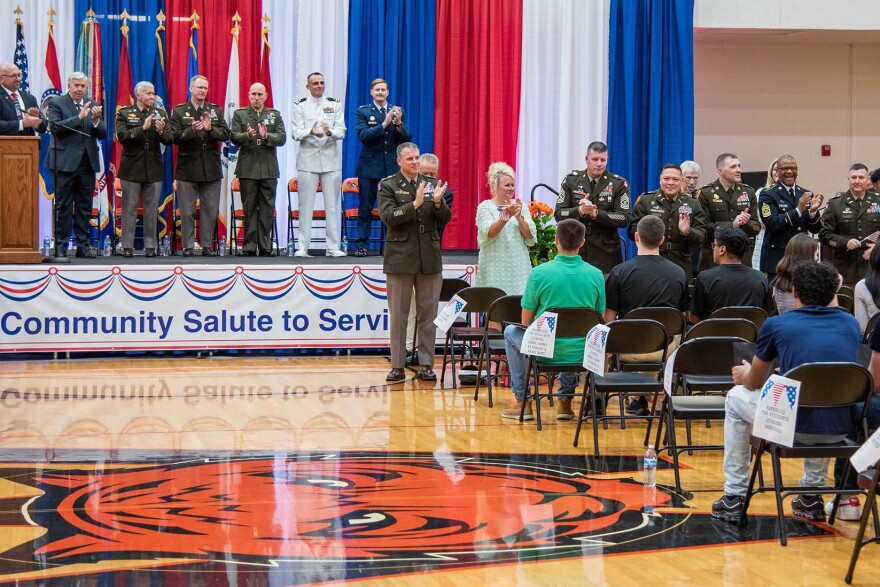The U.S. Military's new recruiting classes are heavily tilted toward family members of people who've served. That's raising questions about the sustainability of military recruiting practices, especially during one of the worst recruiting years in decades.
Half way through this year’s recruiting process, the Army was only at 23% of its goal. The other branches are seeing similar numbers.
"This is arguably the most challenging recruiting year since the inception of the all-volunteer force," Lt. Gen. David Ottignon, the Marine Corps officer in charge of manpower, testified before a Senate committee in April.
One problem is an over reliance on recruits who come from military families.
According to the Pew Research Center, 60% of veterans under 40 have an immediate family member who served. Among new recruits, 30% have a parent in the military, and 70% report a family member in the armed forces. That’s an especially striking number considering fewer than 1% of Americans have any military service time.
Laneisha Cox, who recently graduated from Waynesville High School in southern Missouri, is an example.
“I realized that the military is a safe place to have to get college and get the job that you want and pursue the career that you want,” Cox said after a recent celebration of Missouri high school graduates planning to enter the armed forces. “Plus, family legacy.”
For Cox, that family legacy is strong. Her mother, grandfather, stepfather, and uncle all served. So did her grandmother, who encouraged Cox to enlist.
“She kind of talked to me," Cox said. "I really didn’t know where to go, and she set me on the right path to go somewhere.”
Cox is enlisting in the Army with a career goal of public affairs and communication. Cox’s mother, Sgt. LaTasha Blunt, said she didn’t push her daughter to the military, but she’s glad she came to that decision.
“You get to see different places, you get to meet different people, you get to learn a lot of stuff. So I think every kid should always take that one step into the military, even if they don’t stay,” Blunt said. “Just try that for four years, get the college they are going to give you. After those four years, you can do anything.”
Critics say the military needs to broaden its recruiting base.
“Really, the time to change this reliance on the military children pipeline to the military was several years ago,” said Nathalie Grogan, who researches military and veterans for the Center for New American Security, a Washington D.C. think tank that is largely funded by military contractors.
“Not every military child goes on to serve, so that pool gets smaller. It's a vicious cycle, and it’s not sustainable in the future,” Grogan said.
Another factor working against the military is that fewer young people are eligible to enlist. According to the Pentagon, 71% of Americans age 17 to 24 are ineligible for the military, primarily because they are overweight, undereducated, or have criminal records. They can also be disqualified for using recreational drugs or taking prescription drugs like Adderall.
Despite their recent recruiting challenges, military leaders have shown little interest in relaxing enlistment standards.
But they say they are committed to inspiring those not from military families to join, specifically pointing at programs like the Junior Reserve Officers Training Corps in high schools.
“I joined, and no one in my family had ever served before," said Maj. Gen. James Bonner, commander of Fort Leonard Wood in Missouri, one of the Army’s locations for basic training. "But I had mentors out there. I became involved, and so I think that’s the beauty of the junior ROTC programs in these schools.”
Some recruits say the armed forces have a lot to offer, and a family connection isn’t necessary.
“I wanted to further my education in science, especially physics. I think the Space Force best suits me to be able to learn new things,” said Travis Novak, a Waynesville High School graduate. “As long as the recruiters are there and can show that to kids in high school, I think they can see the value and consider it.”
This story was produced by the American Homefront Project, a public media collaboration that reports on American military life and veterans. Funding comes from the Corporation for Public Broadcasting.





